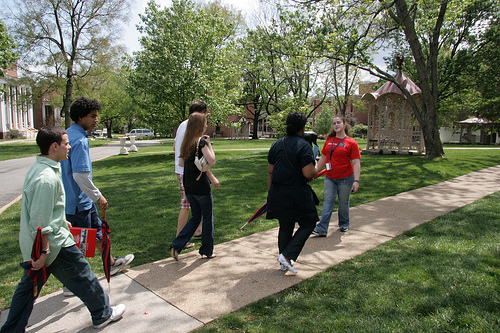
“Shanna gives tour of Belmont,” Nathan T. Baker, Flickr
Would You Be a Good Tour Guide?
Have you ever visited a college or high school campus and been given a tour? Have you ever given a tour to a new student? If you have done either, you know that most tour guides try to show the campus in a good light; they don’t misrepresent anything (usually), but they do try to emphasize the positive aspects for the people on the tour.
How would you do as a tour guide?
If you were leading a tour, which of the activities below do you think would be important to include?

“Tour Guide Terence,” Amancay Maahs, Flickr
If you found four correct responses, you would probably make a good tour guide.
Little things make a big difference. A tour is likely to be successful if the guide considers the participants, gives them reason to trust what the guide is talking about, and informs them clearly in an easy-to-grasp way. It is not just giving a tour that’s important, but also how the tour is given.
When you write, you take your readers on a tour of your ideas. Just like the campus tour guide, you must consider how to get your readers to take you seriously and how to make them care. You need to talk your readers through the writing by signaling when a new part begins or when you backtrack to point out a similarity. (Just like the campus tour, you would avoid digressions such as writing about dating problems or what you think about political structures unless these are important to your topic.) If you do these things, you will be a good tour guide in your own writing. Readers will see your writing in a good light and will understand and appreciate what you have to say.
Good tour guides make connections, make things clear, and make the writing sound authoritative. One way to accomplish these goals is to use rhetorical devices and transitional expressions. Rhetorical devices and transitional expressions are ways for the writer to present ideas and information to the audience. They are not the basic content, but they help the audience to connect what you’re saying as they tour your writing.
In this lesson, you will learn about two rhetorical devices: parallel structure and rhetorical questions. You will also learn how to use six transitional expressions. Learning to use these devices and expressions in your writing will help you communicate ideas more clearly and more powerfully.